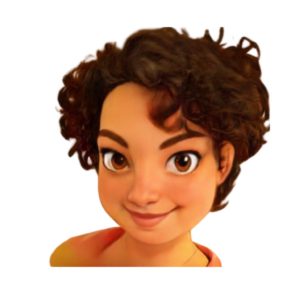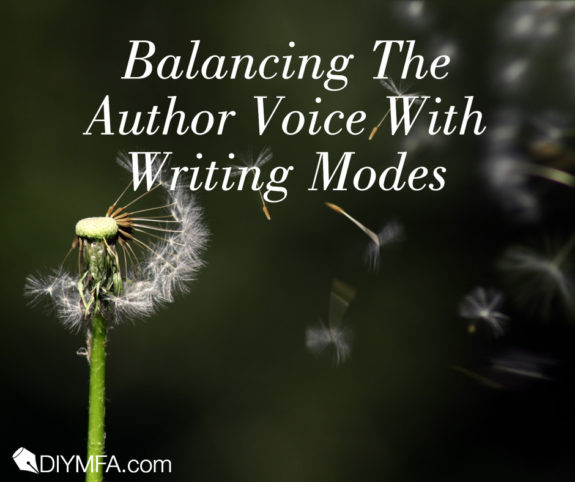Our author voices are made up of a combination of modes. The four main ones being dialogue, description, action, and internal thought. Those are the most common modes balancing fictional prose.
Too much of any one mode—clumps of description, trains of dialogue, pages of action, and dumps of internal thought—bogs down prose and makes it heavy or confusing. Or boring. Sure, there will be scenes with primarily one mode or another, but rarely will there be a scene with only one mode. Most scenes are best served by a balance of all four modes.
Most paragraphs are more interesting if they’re a combination of at least two modes. A paragraph of description is made much more interesting if there are character impressions mixed in. A page of action is made much more vivid if interspersed with bits of description. Scenes of dialogue are more interesting with description, action and internal thought around it.
Ideally, paragraphs with three or more modes are most interesting. A paragraph of internal thought interspersed among dialogue and description with actions is a much richer scene than a monologue of character musings. It makes prose that keeps the reader’s imagination more active.
I learned how to balance these four modes in Margie Lawson’s Deep Editing lecture packets four years ago, and I still think about balancing those everyday I write.
(There are other modes besides those four. Margie Lawson talks a lot about emotion as a separate category which requires its own article. A lot of people put exposition in a category of its own. For some novels, this works. These days a lot of editors prefer what they call “deep POV” where every part of the prose is intricately connected to the character point-of-view. To get exposition in deep POV, it needs to come out more as internal thought or dialogue.)
Try It Out
Let’s say we have a protagonist at a dinner party, trying to decide if she wants to eat something or go home. Here’s the description all by itself:
On a white linen tablecloth, there sat a plate full of juicy red apples.
It’s dry and lonely, and we could easily add an internal thought.
On its own that internal thought would be:
She should get home to do her dirty laundry, but there was nothing to eat there.
Insert the internal thought into the description and we get something like:
The white linen tablecloth reminded her of how dirty her laundry was at home, but those juicy red apples tempted her to stay.
Mixing the description and the internal thought together makes both of them much more interesting and helps attach meaning to what the character is seeing. Let’s see if we can get some simple action in there too.
Alone the action would be:
She touched the tablecloth and stared at the apples.
Very simple and not much going on, but if we put all three together:
She ran her fingers over the white linen tablecloth, so much cleaner than hers was at home, and she stared at the juicy red apples tempting her to stay.
Inserting some action into the sentence gives it more life. There’s now movement involved and the scene is no longer static. We can throw some dialogue in there too.
The dialogue alone would be:
“I’m leaving after I eat an apple.”
But if we put all of it together we get something much more detailed:
“I’m leaving.” She ran her fingers over the white linen tablecloth so much cleaner than hers was at home, then she stared at the juicy red apples tempting her to stay. “After I eat an apple.”
Adding two or more modes of writing to any sentence makes it come to life. Suddenly, every sentence you write is doing double, triple, or quadruple duty to help convey your character and your story. This is all a grand way of conveying the timeless rule of Show Don’t Tell. It takes a lot more time and more editing, but it makes the story much more interesting to both read and write.

Robin Lovett is a romance writer of erotic sci-fi and dark thrillers. She’s published with Entangled Publishing and SMP Swerve. She loves to chat on Twitter @LovettRomance and every Sunday evening you can find her with other romance writers at #RWChat. She is represented by Rachel Brooks of BookEnds Literary Agency.







